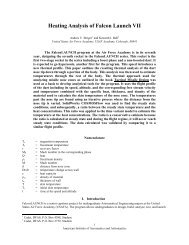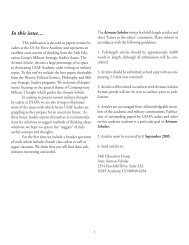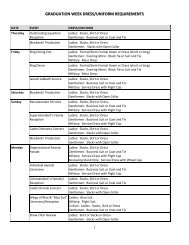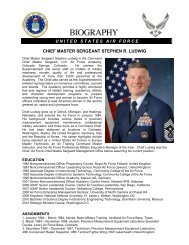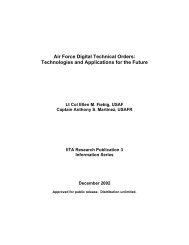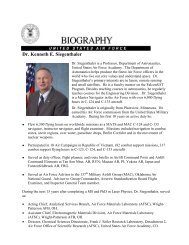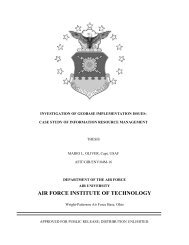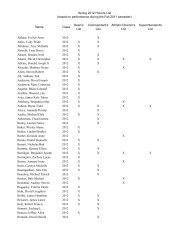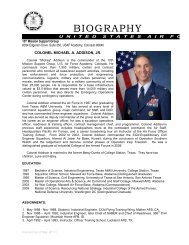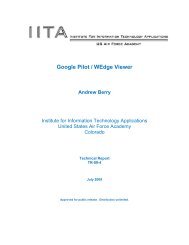the rollback of south africa's biological warfare program
the rollback of south africa's biological warfare program
the rollback of south africa's biological warfare program
Create successful ePaper yourself
Turn your PDF publications into a flip-book with our unique Google optimized e-Paper software.
<strong>the</strong> Cuban and Angolan forces to don suits, which would cut combat<br />
effectiveness in half. In 1981, General Constand Viljoen, SADF Chief <strong>of</strong> Staff,<br />
requested that <strong>the</strong> CBW <strong>program</strong> provide SADF with agents for crowd control<br />
in South Africa. O<strong>the</strong>r possible uses considered included counter-insurgency,<br />
assassinations, and black population control. It is noteworthy that, during <strong>the</strong><br />
process <strong>of</strong> launching <strong>the</strong> CBW <strong>program</strong>, no delegation from South Africa<br />
appeared at <strong>the</strong> 1980 review conference for <strong>the</strong> 1975 Biological Weapons<br />
Convention.<br />
In April 1981, a top-level SADF committee meeting finalized <strong>the</strong><br />
principles for Project Coast. 45 One principle was that chemical and <strong>biological</strong><br />
<strong>warfare</strong> (CBW) should be treated as a top-secret matter, because it was<br />
susceptible to deception by adversaries. Ano<strong>the</strong>r was that, since <strong>the</strong> West had<br />
supposedly fallen behind <strong>the</strong> Soviet Union, South Africa had to fend for itself<br />
in <strong>the</strong> CBW arena. The SADF committee decided that secrecy was essential<br />
and that South Africa would use front companies to research and produce<br />
chemical and <strong>biological</strong> weapons in top-secret installations. The desire for<br />
secrecy meant secret funding for <strong>the</strong> project, <strong>the</strong> creation <strong>of</strong> front companies,<br />
and <strong>the</strong> exclusion <strong>of</strong> <strong>the</strong> state arms producer (ARMSCOR) from <strong>the</strong> initial<br />
phases <strong>of</strong> <strong>the</strong> project. ARMSCOR would only be brought in during <strong>the</strong><br />
weaponization phace <strong>of</strong> <strong>the</strong> <strong>program</strong>. As Malan suggested, South Africa would<br />
experiment with a strategy <strong>of</strong> forcing <strong>the</strong> enemy in Angola to don protective<br />
suits. The CBW <strong>program</strong> would also investigate means <strong>of</strong> dealing with<br />
massive demonstrations, insurrection, and insurgency, as well as black<br />
population growth. Ano<strong>the</strong>r principle was that <strong>biological</strong> <strong>warfare</strong> (BW) had to<br />
be used with caution. BW could be devastatingly effective and, <strong>the</strong>refore,<br />
attractive. However, <strong>the</strong> regime was concerned that BW was difficult to<br />
control and that it could cause tremendous, plague-like damage.<br />
In May 1981, <strong>the</strong> Surgeon General and head <strong>of</strong> SAMS, Maj. Gen.<br />
Nieuwoudt, established Project Coast, and <strong>the</strong> Minister <strong>of</strong> Defense, Magnus<br />
18




